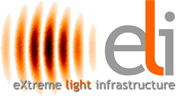Part 8 of 18 Parts (Please read Parts 1 thru 7 first)
The present age of information technology was made possible by the exponential increase in processing power of microcircuits which started in the 1970s and continues today. Moore’s law was coined early on. It said that the number of transistors that can be packaged into an integrated chip doubles approximately every two years.
It is not widely recognized that a similar process has been taking place in laser technology. The intensity of the pulses of light which lasers can generate has been increasing exponentially since the first laser was built in 1960. It has become possible to concentrate bigger and bigger amounts of energy into shorter and shorter pulses which have no reached a millionth of a billionth of a second or one femtosecond. (The ratio of a femtosecond to one second is the same as the ratio of one second to seven hundred and seventy years.) This is referred to as realm of “extreme light”. This is a form of light that has never appears in nature until we developed high powered lasers. This evolution of lasers may ultimately impact our society as much as the information technology revolution but in a very different way.
It is no exaggeration to say that these lasers mark a leap in the power of humanity to manipulate the physical universe. Laser based fusion may eventually power whole cities and propel spacecraft to Mars. In addition to many important developments in technology, lasers are also the key to keeping Moore’s law in operation through improving lithography of microchips and other applications in electronics. Future generations of information technology may operate with light instead of electrons and, of course, lasers will be critical for this development.
The maximum intensity that can be achieved by focusing a laser pulse grew very quickly in the first few years after lasers were invented. This period was followed by more than a decade of slower progress. This period was followed by another burst of rapid growth that started in 1985.
This new period of rapid growth was triggered by the invention of chirped pulse amplification” (CPA). CPA marked a revolutionary breakthrough in the ability to amplify pulses of laser light. Since this breakthrough, laser intensities have grown by a factor of ten times every five years.
Now, laser technology not only allows light energy to be concentrated at a point in space but also concentrated at a point in time. There are commercial lasers now available which produce pulses of laser light that last less than a few femtoseconds.
In current research, laser pulse lengths are being reduced to less than a femtosecond into the attosecond region which is a thousand times shorter or a billionth of a billionth of a second. These durations are in the range of fundamental physical processes that occur in individual atoms. It is now possible to capture something like a slow- motion video of the activity of electrons in an atom.
Please read Part 9 next.
